Amy Sprague
May 29, 2025
"What impresses me most about this year's winners is how they're addressing fundamental problems that affect all of us – from keeping our satellites safe to making robots that can better navigate around people," said Professor Jim Hermanson, who hosted the event. "These students are asking the right questions and developing innovative approaches that could shape the future of aerospace engineering."
A&A's undergraduate research was on display at the SHowcase of Aerospace Research and Capstones (SHARC), demonstrating the breadth and innovation of student work across the department. From tracking space debris to building snake-inspired robots, these projects tackle real-world challenges with creative engineering solutions and spanned all of our research disciplines.
Congratulations to all participants for an engaging and successful 2025 Undergraduate Showcase. Thank you also to our judges: Marcus McElroy and Maia Willebrand.
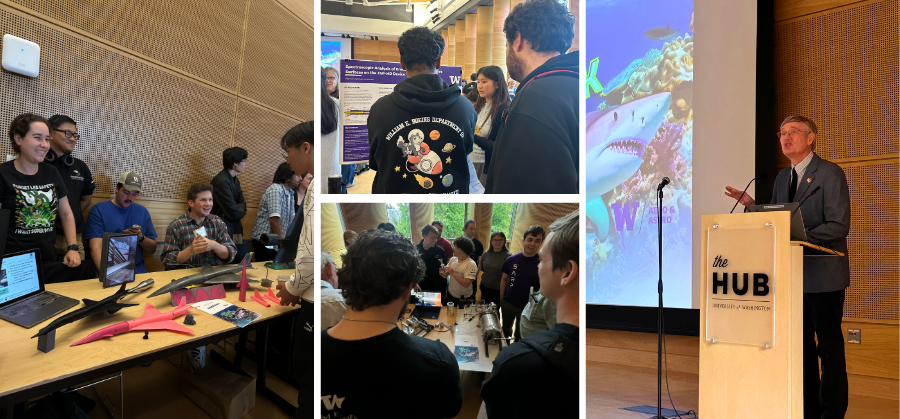
Scenes from the 2025 SHARC Showcase, hosted by Professor Jim Hermanson (right).
Showcase winners
Four research poster presenters received awards from our Judges Panel and the People’s Choice:
Award for Fundamental Discovery: Dena Villasenor
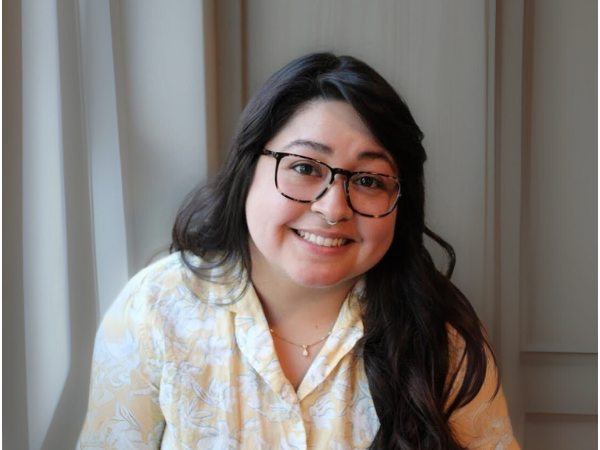
Unveiling the Nonlinear Mechanics of Bio-Inspired Snake Robotics
Dena Villasenor earned recognition for her work on "Unveiling the Nonlinear Mechanics of Bio-Inspired Snake Robotics," a project that seeks to understand how snakes move so efficiently despite having rigid bones and soft muscles. Working with Professor Ed Habtour in the Illimited Lab, Villasenor developed a mathematical model using multiple segments to simulate the musculoskeletal schemes to enable the remarkable motions of snakes.
Her initial findings revealed something unexpected: even when each segment had identical properties, the stiffness and compliance of each segment amplified coupling with adjacent segments and created increasingly larger oscillations toward the tail end. This suggests that real snakes must actively control the stiffness and damping of each body segment to achieve their remarkably elegant and efficient locomotion.
The research could lead to more adaptable robots capable of navigating complex terrains where traditional wheeled or tracked vehicles struggle – think search and rescue operations in collapsed buildings or exploration of planetary surfaces.
Award for Applied Innovation: Kyshawn Savone-Warren and Senna Keesing
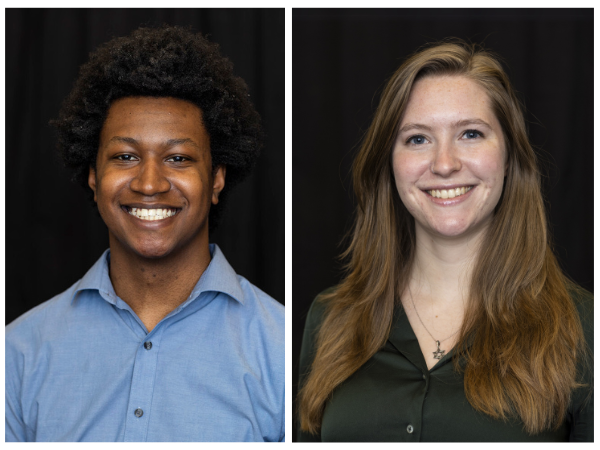
Egocentric Glasses for Autonomous Social Navigation
The team of Kyshawn Savone-Warren and Senna Keesing tackled a critical challenge in robotics: how to make autonomous systems navigate around people in a way that feels natural and safe. Their project, "Egocentric Glasses for Autonomous Social Navigation," uses special glasses that track eye movements and pupil dilation to understand how comfortable a person feels in different situations.
Working with Professor Karen Leung in the CTRL Lab, they're developing a system that could allow robots – like autonomous wheelchairs – to adjust their behavior based on their user's comfort level. A cautious person might prefer their robot to give people extra space, while someone more adventurous might be fine with closer navigation.
By measuring subtle changes in gaze patterns and pupil size, the system can detect when someone feels uncertain or stressed, then adapt the robot's path planning accordingly. This personalized approach could significantly improve trust and acceptance of autonomous systems in everyday environments.
Award for Scientific Communication: Matthew Idso
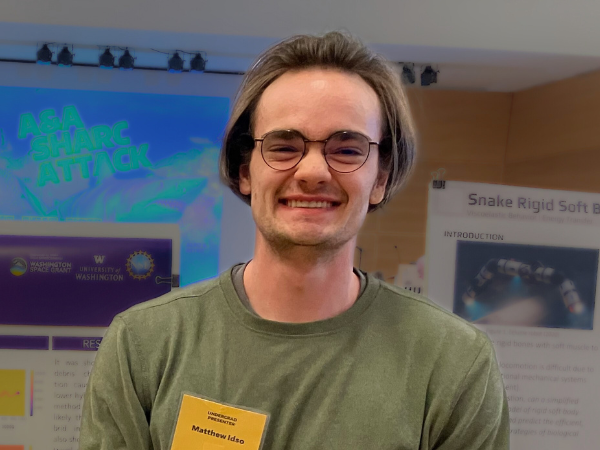
Modeling Orbital Debris' Wave Signatures in the Ionosphere
Matthew Idso received recognition for clearly presenting complex research on "Modeling Orbital Debris' Wave Signatures in the Ionosphere." Working with Professor Bhuvana Srinivasan in the Plasmawise Lab and Virginia Tech’s Wayne Scales, Idso is investigating whether small pieces of space debris – about the size of a marble – create detectable wave patterns as they move through the ionosphere.
Currently, these tiny debris pieces are nearly impossible to track with existing radar systems, yet they pose a real threat to satellites and spacecraft. Idso's computer simulations suggest that debris creates waves at specific frequencies as it moves through the charged particles of the upper atmosphere, and these waves travel far enough to potentially be detected by spacecraft.
If successful, this research could provide a new method for tracking dangerous space debris that's currently invisible to ground-based systems, helping protect the satellites we rely on for communication, weather forecasting, and GPS navigation.
People's Choice Award: Emily Ku and Neha Saripella
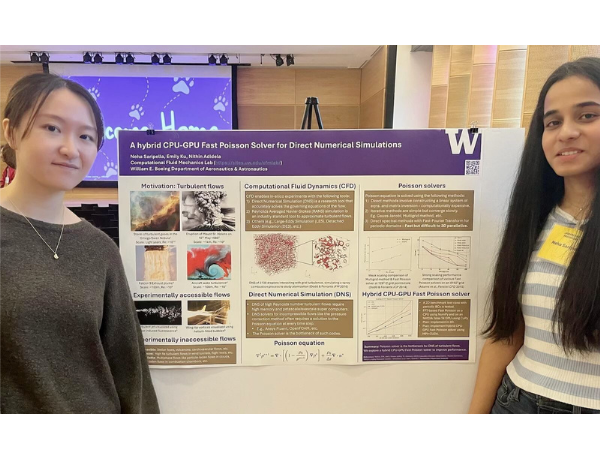
A Hybrid CPU-GPU Fast Poisson Solver for Direct Numerical Simulations
The attendee’s favorite went to Emily Ku and Neha Saripella for their work with Ph.D. student Nithin Adidela on "A Hybrid CPU-GPU Fast Poisson Solver for Direct Numerical Simulations." This very technical research addresses a fundamental bottleneck in computational fluid dynamics research.
Working with Professor Antonino Ferrante in the Computational Fluid Mechanics Lab, they're developing faster ways to simulate turbulent flows – the chaotic motion of fluids that's crucial for understanding everything from aircraft wake turbulence to volcanic eruptions and stellar flows.
The challenge is that accurate simulations require enormous computational power, and current methods often hit processing bottlenecks. By combining the strengths of both traditional computer processors (CPUs) and graphics processors (GPUs), their hybrid approach could enable more complex and realistic simulations of phenomena that are difficult or expensive to study experimentally.
Explore all of our undergraduate research posters
Enhancing and Characterizing Temperature Sensitive Paint for Aluminum and Corian
Cade Homfeldt and Vanessa Franco Lopez
Spectroscopic Analysis of Erosion Rate from Electrode Surfaces on the ZaP-HD Device
Elyse Lian
3D Particle Image Velocimetry (3DPIV) Investigation of Drag in a Tunable Helmholtz Resonator Array Under Grazing Flow
Jeffery Zhang
QFV Lab and Illimited Lab
Comparison of kinetic and a novel hybrid-kinetic scheme for simulating plasma transport and instabilities
Lela Corson
Bioinspired Burrowing Methods
Zach Gutfeld